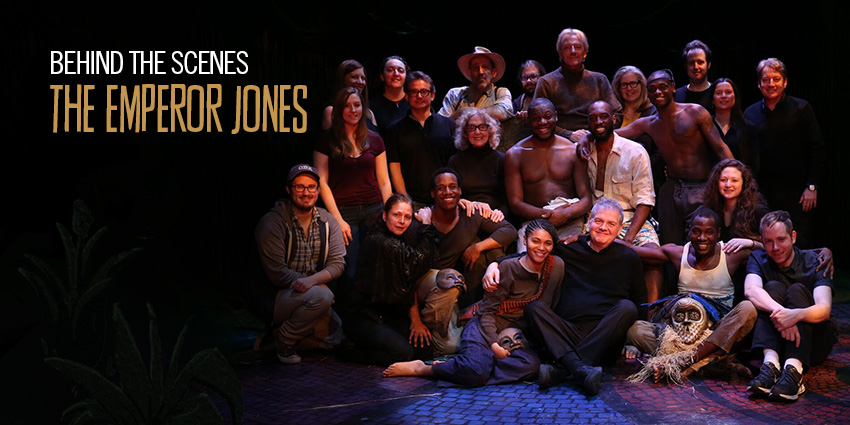

Click through the images
to go inside the puppetry &
choreography that bring
Brutus Jones' nightmares
to vivid life.

Flanagan remembers: “Ideas for the trees were the very first thing I drew. Looking at the script as Brutus’ trip into his very Jungian collective unconscious, it sort of led me down the rabbit hole. We start off with an old woman, representative of the disenfranchised of the island. A very natural half mask helped define her as did the masks for Lem and the rebels at the end."

Flanagan: "I have always thought that Jones leaves the material world as soon as he enters the woods. The dancers portraying the trees would form the “haunts”, the elements that bring his nightmares to life, which become more and more stylized as he travels.”

“The haunts would be of the forest, the trees operating the elements. It is an intriguing set up. Are these haunts real? Are they just a part of Jones’ deteriorating mental state, or are they a conjuring of the Islanders’ rituals?”

Flanagan researched traditional African masks, and designed the puppets as Japanese Bunraku-style puppets, where you can see the puppeteers operating them. "The magic of this style of puppetry is that the audience tends to block out the puppeteer, really stretching and exercising their willing suspension of disbelief.”

In addition to Jones' visions, McNabb choreographed transitions where the Emperor battles an unrelenting jungle. "O’Neill actually asks for scene breaks but it was important for the action to feel non-stop as it would in Brutus’ mind. The trees become adversarial as the nightmare proceeds, like the jungle is closing in and fighting him.”

The climax of this nightmare is Jones’ ritualistic dance with a witch doctor and a crocodile. McNabb's choreography "uses the idea of ceremony, incantation, and Brutus’ own history as a way to psychologically represent his final-mind moment, such as humans supposedly experience at drowning or falling to death.”

McNabb: "The masks were not originally designed for a sequence that was this active, but with actor-dancers as willing as I had, we pushed the limit." Flanagan: “There is a lot that goes on during that sequence. The croc has been altered over time to allow his incredible dance.”

For McNabb, “the crocodile’s story is a mini-reflection of a bully’s story, the story of a despot.” Flanagan points to this as his favorite effect in the production: “Yes, he is a masked dancer, but he becomes the crocodile. He is performed breathtakingly!”